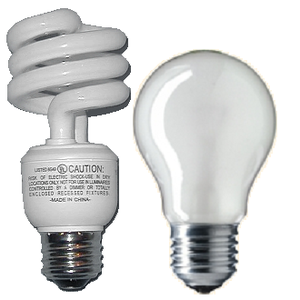 Image via WikipediaMany folks are unaware that the federal government's Energy Independence and Security Act of 2007 phases out Thomas Edison's incandescent bulbs in favor of the newer CFLs beginning in 2012 and culminates in a total ban on the older technology by 2014.
Image via WikipediaMany folks are unaware that the federal government's Energy Independence and Security Act of 2007 phases out Thomas Edison's incandescent bulbs in favor of the newer CFLs beginning in 2012 and culminates in a total ban on the older technology by 2014.California is leading the way by banning the sale of 100 watt incandescent bulbs in 2011, a year ahead of the rest of the country. The remaining 75, 60 and 40 watt bulbs will be phased into the ban in subsequent years.
To environmentalists this is currently a victory but could become a nightmare in future years. Advocates of the replacement CFL bulbs laud their energy saving feature while opponents decry their inferior lighting qualities.
There are other, much more subtle consequences, of this switch.
You see, each of the CFL replacement bulbs contain mercury. This makes them almost impossible to produce in the US due to the burden of government regulations. So one consequence will be to drive the jobs that were used to manufacture traditional bulbs overseas.
Another consequence is the potential to impact the environment when disposing of used CFLs. Most people don't realize that they are to be treated as hazardous waste. I wonder how many of these little poison mercury bombs will wind up in traditional landfills?
The EPA has issued a set of guidelines dealing with how the average consumer should handle the cleanup of a broken CFL. These guidelines include:
- open a window and leave the room for 5-10 minutes
- shut off the central air/heating system
- don't vacuum the area unless you have too and if you do, immediately remove the vacuum bag and seal it in a plastic bag
Detailed Recommendations

No comments:
Post a Comment